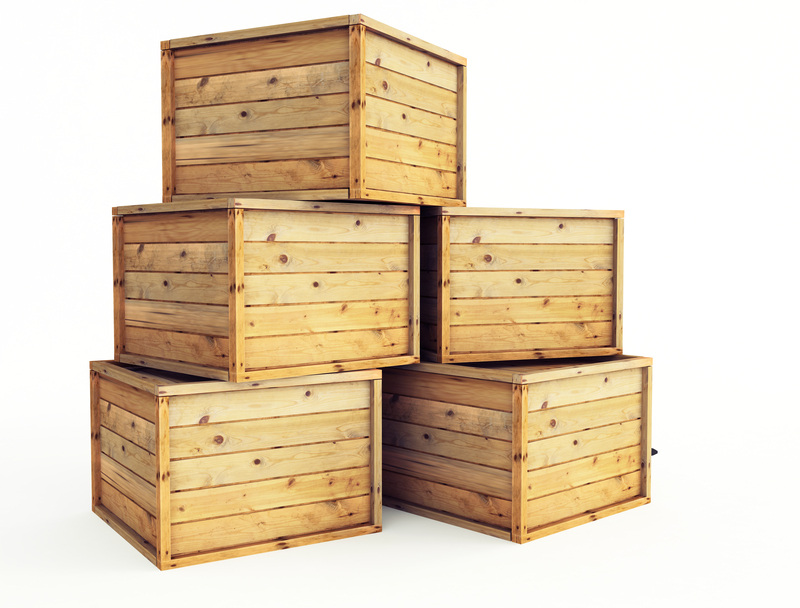Maximize Sofa Longevity: Pro Storage Tips
Posted on 23/06/2025
Maximize Sofa Longevity: Pro Storage Tips
Your sofa is more than just a piece of furniture--it's the heart of your living space, a place where loved ones gather, and an investment in comfort and style. Whether you're renovating, downsizing, or simply need more space, sometimes it becomes necessary to put your sofa in storage. Ensuring your sofa's longevity requires more than just moving it out of sight. From choosing the right storage unit to prepping and protecting your priceless seat, professional storage techniques can make all the difference.
Why Proper Sofa Storage Methods Matter
Many homeowners underestimate the impact of storage on the condition of their furniture. Improper storage can lead to sagging cushions, warping frames, musty odors, or even infestations. The right sofa care in storage preserves its comfort, appearance, and structure for years to come.
- Prevents physical damage such as breaks and tears.
- Guards against moisture, pests, and dust accumulation.
- Maintains shape, padding, and upholstery quality.
- Reduces the need for costly repairs or replacement.

How to Maximize Sofa Longevity with Expert Storage Tips
1. Clean Thoroughly Before Storage
- Vacuum and Spot Clean: Use a vacuum with upholstery attachment to remove dust, pet hair, and crumbs from every crevice. Spot-clean any stains with a fabric-appropriate cleaner.
- Launder or Dry Clean Removable Covers: If the cushion covers are removable, wash or dry clean them as per the manufacturer's instructions.
- Assess for Repairs: Tighten loose screws, glue wobbly joints, or patch up minor tears to prevent further damage in storage.
Why this matters: Storing a clean sofa prevents odors, mold, and pests from taking hold while in storage. Neglecting this step can shorten the life of your furniture dramatically.
2. Disassemble Your Sofa When Possible
- Remove Legs, Arms, and Cushions: If feasible, disassemble your sofa. Store the legs, arms, and loose cushions separately to minimize stress on the frame and upholstery.
- Keep Hardware Secure: Place screws, bolts, and small hardware in a sealed, labeled bag taped to the sofa frame so nothing gets lost.
- Wrap Detached Pieces: Use bubble wrap, moving blankets, or protective covers on each piece to guard against scratching or dents.
Pro tip: Disassembling not only eases transportation, but also ensures you can maximize the lifespan of your sofa by preventing accidental bend or warp.
3. Choose the Right Storage Environment
- Opt for Climate-Controlled Storage: Humidity and temperature swings can cause wood to split, metal to rust, and fabrics to mildew. Climate-controlled units keep your sofa in optimal condition.
- Check the Unit for Cleanliness and Security: Ensure the facility is reputable, clean, pest-free, and offers robust security measures.
Why this helps: Keeping your sofa in a stable environment slows down wear and prevents premature aging of materials.
4. Protect With Proper Wrapping
- Breathable Covers Over Plastic: While plastic sheeting can repel moisture, it also traps humidity and can promote mold growth. Use specially designed sofa storage bags, cotton sheets, or furniture blankets for best results.
- Double Up on Protection: For ultimate sofa preservation in storage, first cover with a sheet, then add a waterproof but breathable cover on top.
- Seal Gaps and Openings: Use tape or stretchy wrap to seal openings and seams, keeping out dust and pests--but always leave some space for airflow.
Expert insight: Properly wrapped sofas last longer and return to your home looking (and smelling) great.
5. Elevate the Sofa Off the Floor
- Use Pallets or Blocks: Place your sofa on top of wooden pallets or cinder blocks. This prevents ground moisture from seeping up and deters bugs from crawling in.
- Create Space for Airflow: Elevation allows air to circulate, which reduces the risk of mold, mildew, and warping.
Storage pro tip: Never store your sofa directly on concrete, as it can retain cold and dampness, damaging your furniture over time.
6. Avoid Stacking Heavy Items on Your Sofa
- Maintain the Sofa's Shape: Placing heavy objects on cushions or armrests can cause indentations, warping, or even breakage.
- Use the Sofa as a Standalone Unit: Always place lighter items, if any, such as accent pillows, inside sealed bags on top of the sofa--never heavy boxes or furniture.
Remember: To extend sofa life in storage, ensure there's nothing pressing down on it that could deform springs, foam, or woodwork.
7. Regularly Check on Your Stored Sofa
- Inspect Routinely: Visit your storage unit every couple of months to inspect for pests, moisture buildup, or shifting covers.
- Replace or Adjust Wrapping: If you notice any damage or excessive humidity, rewrap or replace protective covers as necessary.
Quick tip: Early detection of issues significantly increases your sofa's survival in storage.
How to Store a Leather vs. Fabric Sofa
Leather Sofas
- Condition Before Storage: Apply a leather conditioner to prevent cracking or drying out during long-term storage.
- Avoid Direct Contact with Plastic: Leather needs to breathe, so always use cotton covers or padded blankets.
- Protect from Sunlight: If your storage space has natural light, cover or face your leather sofa away from windows to avoid fading.
Fabric Sofas
- Deep Clean: Thoroughly clean and dry to ensure no moisture, which encourages mold development.
- Double Bag Cushions: Place detached cushions inside sealed cotton or canvas storage bags, not plastic.
- Use Moth Repellents: Place natural moth repellents, such as cedar blocks or lavender sachets, inside the storage unit for added protection.
Important: Understanding your sofa's material allows for tailored storage solutions, ensuring maximum longevity for both leather and fabric sofas.
Common Sofa Storage Mistakes to Avoid
- Failing to clean before storage-- traps odors and can attract pests.
- Storing in non-climate-controlled environments-- accelerates deterioration.
- Using plastic covers directly on fabric or leather-- increases mold risk.
- Forgetting to elevate the sofa-- exposes it to ground moisture and pests.
- Neglecting regular checks-- turns minor issues into major repairs.
Advanced Pro Tips for Sofa Care in Storage
Use Moisture Absorbers
Place silica gel packets or moisture-absorbing tubs near or beneath your sofa to suck up excess humidity. This is especially important in regions with damp climates.
Label Every Component
If you disassembled your sofa, label each piece for easy reassembly. Take photos before and during disassembly as a reference guide.
Utilize Pest Deterrents
Strategically place natural pest deterrents, like cedar shavings or peppermint oil, to ward off rodents and bugs. Avoid harsh chemicals that could damage your upholstery.
Insurance and Documentation
Consider insuring your stored sofa. Take detailed photos and keep receipts in case you ever need to make a claim. Documentation provides peace of mind in case of unforeseen incidents.
Frequently Asked Questions About Sofa Storage and Longevity
-
Q: Can I store my sofa vertically?
A: No. It's best to store sofas on their feet to maintain structural integrity and avoid warping or frame damage. -
Q: Should I use a regular storage unit or climate control?
A: For maximum sofa life, always opt for climate-controlled storage units. -
Q: How should I store sofa cushions separately?
A: Wrap cushions in cotton or canvas bags and store on pallets, not directly on the floor. -
Q: How long can I safely store my sofa?
A: With proper preparation, protection, and routine checks, a sofa can stay in storage for years without significant deterioration.

Summary: The Secret to a Long-Lasting Sofa in Storage
Maximizing your sofa's lifespan starts with careful preparation and continues with vigilant storage practices. Avoid shortcuts--the few hours spent cleaning, wrapping, and properly positioning your sofa pays off in years of additional use. By following these professional sofa storage tips, you defend your investment and preserve comfort for the future.
Whether you're storing for a few months or several years, remember: prevention is better than cure. Take the time now to safeguard your sofa, and you'll be rewarded with lasting durability and inviting softness when you bring it home again.
Final Checklist: Pro Storage Tips for Sofa Longevity
- Thoroughly clean and repair your sofa before storage.
- Disassemble, label, and wrap each component separately.
- Choose a climate-controlled, clean, and secure storage facility.
- Use breathable covers and avoid direct plastic contact.
- Elevate the sofa and keep items off the cushions.
- Visit the storage unit regularly to check on conditions.
- Utilize moisture and pest deterrents for added safety.
Take these steps to maximize your sofa's longevity--and enjoy the fruits of your careful investment for many years to come.

